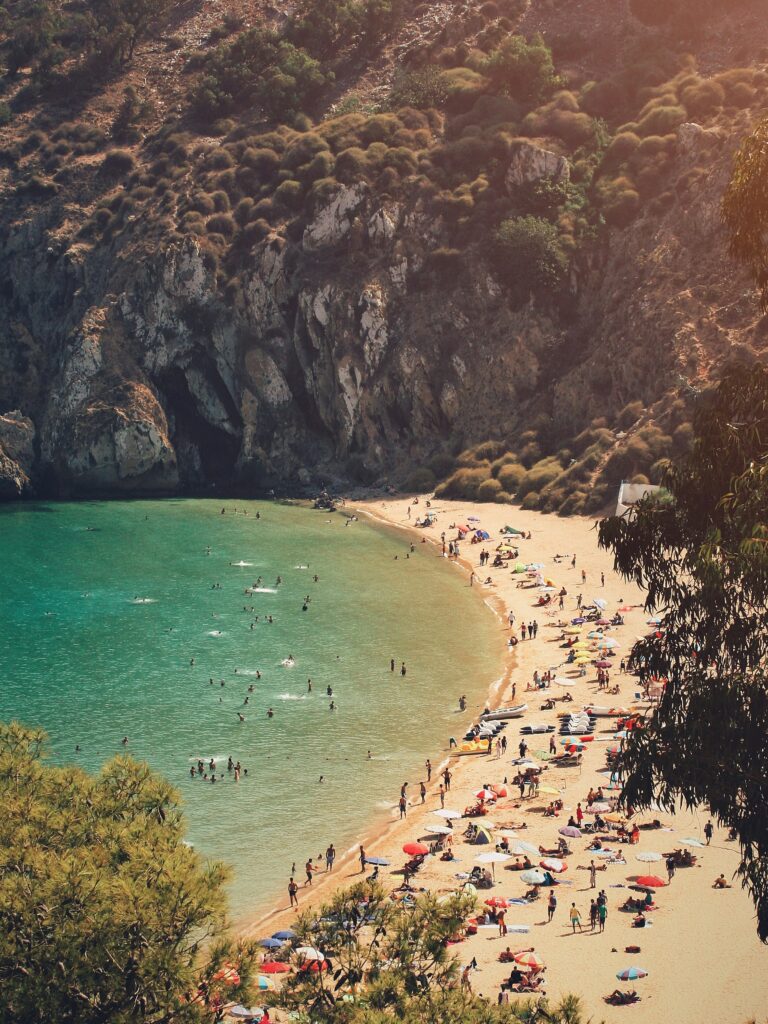Morocco: A Wonderland of Landscapes
At the crossroads of Europe and Africa, Morocco is a wonderland for nature lovers, surrounded by Mediterranean waters and opening onto the vastness of the Atlantic Ocean.
It is the “land of the distant sunset,” a destination rich in contrasts and with a two-thousand-year-old history that will stimulate your curiosity. In these lands where several dynasties succeeded one another, you’ll discover remains of the greatest Mediterranean civilizations. In the north of the country, the Roman ruins of Volubilis stand.
In Rabat, architectural pieces reflect the ancient French presence. Everywhere else, numerous treasures trace the Muslim civilizations: the Kasbah of the Oudayas and the green expanses of the Menara gardens.
Between sea and mountains, desert sands and green plains, eye-popping panoramas shower you with tranquility and natural beauty. Enchanting vivid pictures, along with the richness of a vibrant culture, transport you into a raw, natural environment.
The Anti-Atlas

The Anti-Atlas, recognized for its excessive aridity, hosts modest summits with Jbel Siroua (3,300 meters) being the highest peak. Like the High Atlas and the Middle Atlas, its massifs display an astonishing diversity in terms of fauna, flora, geology, and culture with an Amazigh charm. Its arid character is due to its proximity to the Saharan lands, as its last rampart lies just before the “Hamada du Draa.” Previously unknown, the Anti-Atlas mountains now offer a modern circuit rich in landscapes and leisure activities.
The High Atlas

Commonly known as the “roof of Morocco,” the High Atlas is home to the highest peak in North Africa, Djbel Toubkal, standing at 4,167 meters. Stretching over 750 kilometers, the massifs of the High Atlas separate three parts of Morocco: Atlantic Morocco, Mediterranean Morocco, and Saharan Morocco. With its Amazigh and Berber character, its inhabitants practice livestock farming and agriculture, which are the main economic pillars. The High Atlas is internationally known not only for its national park, which preserves natural biodiversity, but also for its archaeological sites.
The Middle Atlas

The Middle Atlas offers a diverse array of landscapes. Rich in fauna and flora, it presents a colorful picture of lakes, forests of holm oaks, cork oaks, and deserted volcanic plateaus. Spread over 350 kilometers, the massifs of the Middle Atlas cover several regions of Morocco: Ifrane, Khenifra, Sefrou, Boulmane, Midelt, Hajeb, Taza, and Beni-Mellal. These massifs belong to four water basins: the Sebou basin, the Bouregreg basin, the Oum Errabiaa basin, and the Moulouya basin. The first three basins flow into the Atlantic, and the last one into the Mediterranean.
The Atlantic Ocean

The Atlantic Ocean stretches more than 1,300 kilometers to the west of the kingdom, offering a living space to several coastal cities. In the south, Agadir, Tiznit, Dakhla, and other cities are rich in culture, history, and leisure activities. Up north, cities like Essaouira, El Jadida, Casablanca, and Rabat are equally famous. The Atlantic coast, connecting the Sahara to northwest Morocco, combines various cultures: traditional and modern, offering a sweet spot for water sports lovers from all over the world.
The Mediterranean Sea

The Mediterranean Sea stretches over 500 kilometers from the northeast to the northwest of Morocco. The calm azure blue waters and fine golden sands attract many Moroccan and foreign visitors every summer. From Tangier to the far east of Morocco, the sea breeze mixed with Arab-Andalusian culture charms visitors, drawing them to the most beautiful coasts in the world, discovering hidden treasures of wild beaches, and enjoying sunbathing on pebbled sands.
Dakhla

Dakhla is an absolute beauty catering to every taste, perfect for anyone wishing to indulge in the beauty of the sand dunes overlooking the Atlantic Ocean. Sunny all year round, you can swim in winter or autumn under a 25-degree sun or enjoy the leisure activities of its internationally renowned clubs. In Dakhla, PK25 and Foum El Bouir are two famous beaches in the region where you can swim, relax, and enjoy all the snow sports activities.
Merzouga Desert

For a night under the stars or in a bivouac, for long hikes on the sand dunes, and for a unique experience in the Moroccan desert, the Merzouga desert will shower you with its austere beauty. Merzouga is one of the doors that open to the Saharan vastness, with its ochre-brown color under beautiful sunshine. At sunrise or sunset, you’ll enjoy breathtaking landscapes. In bivouac, you’ll experience folk festivities and exceptional Saharan culture. On the back of a camel, you can admire all the wild landscapes.

